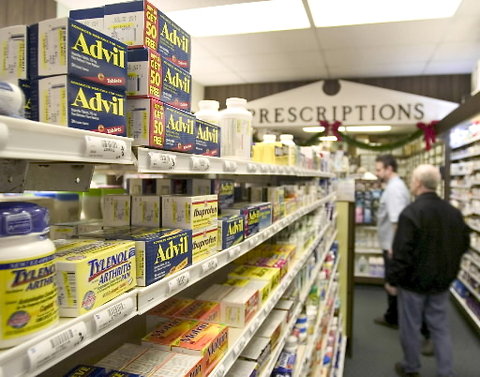Responding to frequently asked questions: TPP TTIP pharmaceutical reimbursement “transparency”

Infojustice | 7 October 2014
Responding to frequently asked questions: TPP TTIP pharmaceutical reimbursement “transparency”
Sean Flynn
Brand name pharmaceutical companies are advocating for inclusion of disciplines on public pharmaceutical reimbursement programs in the ongoing negotiations of the Trans-Pacific Partnership agreement (TPP) and the Transatlantic Trade and Investment Partnership (TTIP) trade agreements. This post answers some frequently asked questions by U.S. public health advocates about these proposals.
Why is pharmaceutical reimbursement policy being negotiated in trade agreements?
A key change in Free Trade Agreements (FTAs) since NAFTA (1994) is that they are not primarily geared toward the elimination of tariffs, quotas and other traditional trade barriers. Today’s agreements impose new minimum regulatory harmonization standards that restrict domestic policy choices. The pharmaceutical industry has been using FTAs to curb government medicine pricing programs. The Trade Promotion Authority Act of 2002 contained a PhRMA-inspired goal to “achieve the elimination of government measures such as price controls and reference pricing.” Pfizer’s CEO has requested that the U.S. pursue agreements guaranteeing an “adequate price” for medicines. http://www.wcl.american.edu/pijip/go/pfizer08132008
Are reimbursement programs regulated by other trade agreements?
Yes — but there are only two previous agreements with such provisions. The Australia-US FTA sought to regulate the operation of the Australian pharmaceutical benefit scheme, which set national insurance reimbursement prices based on pharmaco-economic analysis of the comparative benefits of the drug. Korea began use of a formulary for medicine reimbursement during the FTA negotiation with the U.S. and agreed to restrictions on its operation as part of the final deal.
Are TPP or TTIP trade agreement proposals public?
No. A select group of about 300 corporate advisors have access to US trade policy proposals. Some federal agency personnel, including at HHS, can see trade proposals. For others, the proposals are classified as top secret. There are leaked versions of the TPP intellectual property and reimbursement chapter proposals.
What is in the reimbursement “Transparency” chapter?
In the previous FTAs with Australia and Korea, the heart of USTR’s transparency proposals has been to require that public reimbursement programs use Administrative Procedure Act style notice and comment rule making processes to set reimbursement prices. This is different than the way private insurers of Medicaid programs set prices — which is through a traditional negotiation where neither side is subject to public disclosure requirements of its positions. The Australia FTA for example, requires that governments (but not private insurers or medicine sellers) disclose the methodologies for how they set price offers to pharmaceutical companies in their programs, and subject such determinations to an appeal. In addition to the Australia disciplines, the Korea FTA included a right of companies to appeal a price that does not reflect the “value” of patents. “Value” is nowhere defined in the agreement. Some sources have indicated that USTR officials are offering a chapter like Australia’s for the TPP, and one like Korea’s for the TTIP.
Do US reimbursement programs follow the FTA “transparency” rules?
No. Medicaid Preferred Drug Price lists, 340B drug discounts, VA, DoD and GSA purchasing formularies and other drug pricing programs that obtain similar discounts as foreign governments do not provide appeals or notice and comment rights in their reimbursement determinations. USTR argues that these programs are technically carved out of prior FTAs — e.g. because they are state instead of federal, purchasing rather than reimbursement, etc. Some health groups have questioned whether the programs are truly carved out. In any case, it is clear that most drug pricing programs in the U.S. — especially under Medicaid — do not follow the policies that USTR is promoting in this area. Noting this fact, Vermont Governor Shumlin wrote to President Obama that “it is inappropriate for U.S. trade policy to advance restrictions on pharmaceutical pricing programs that U.S. programs do not meet but for technical carve outs.” http://bit.ly/1eqscBB
Will US programs be carved out of the TPP and TTIP?
Not necessarily. USTR now admits that it is proposing to bind Medicare by its TPP proposal (having its most effect on Medicare PArt B). New Zealand negotiators have stated that they will insist on “no carve outs for any U.S. federal or state-level drug pricing and reimbursement programs, including Medicaid.” (Inside US Trade 11/4/11).
Would the chapter pose barriers to enacting Medicare drug price negotiation?
Yes. If HHS was authorized to negotiate lower prices for Medicare Part D it would come clearly within the scope of the chapters. Medicare would have to “negotiate” through notice and comment processes and provide appeals to companies.
Could a reimbursement price be challenged under investor-state dispute?
Yes. Although ISDS procedures only apply to the investment chapter, an “investment” subject to ISDS is defined broadly to include “every asset that an investor owns or controls, directly or indirectly, that has the characteristics of an investment, [such as] the expectation of gain or profit.” It is thus possible to define a company’s expected price for a drug under patent as an “investment” that is expropriated through reimbursement policies or price regulations.
Is there evidence that the pharmaceutical industry will litigate against reimbursement programs?
Yes. The original use of preferred drug lists in Medicaid was unsuccessfully challenged by the industry all the way to the Supreme Court. Pharmaceutical Research and Manufacturers of America v Meadows, 304 F.3d 1197 (11th Cir. 2002), cert den’d 123 SCt 2213 (2003). Ominously, the industry successfully challenged a DC law that banned excessive pricing of pharmaceuticals with an argument that the law was preempted by the Patent Act’s grant of a monopoly. BIO and PhRMA v. District of Columbia (Fed. Cir. 2007).





